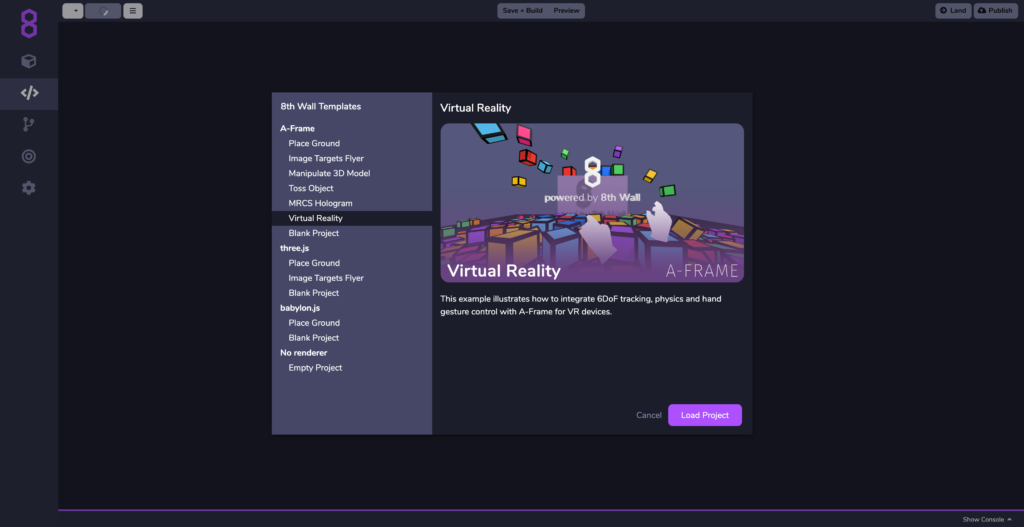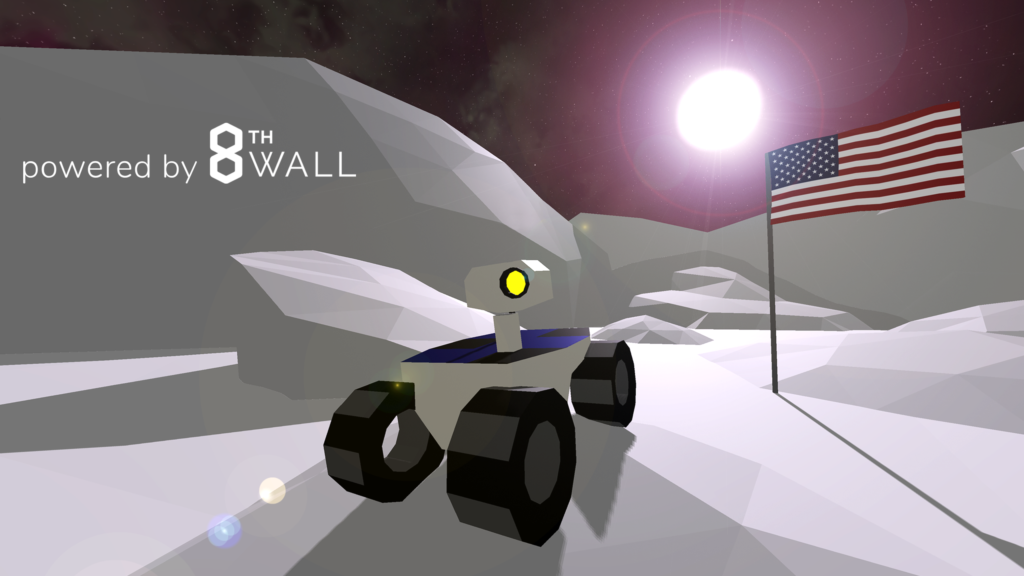WebVR projects are now easier to create and publish through 8th Wall’s new project template.
8th Wall, the platform that gives developers powerful tools to build and launch interactive AR content, has launched their first WebVR project template to all of its Agency and Business plan users. This predesigned template a makes it a whole lot easier for creatives to build out full VR experiences and then easily share them with the public straight through a VR-compatible web browser.
Developers using 8th Wall software will have quick access to a code foundation in which to build their projects upon. The WebVR template is an A-Frame project for Oculus Quest designed to assist developers in building interactive 6DOF WebVR experiences. The project template supports the latest WebXR Device API which is currently being rolled out on Chrome and Chromium browsers.
8th Wall understands that VR development has unique needs, so they built their development platform with those exact needs in mind. With one-click publishing and remote debugging, you are able to test and troubleshoot your projects in a headset without the need to be tethered in order to load an APK on the device.
Their integrated distributed source control system allows unlimited team members to collaborate and edit projects in real time, no matter where you and your team are in the world. And with 8th Walls WebVR template, developers are able to get their 6DoF project up and running within minutes.
To demonstrate 8th Wall’s capabilities in creating WebVR content, their team recently published ROVR RUN, a classic arcade action game which is currently being featured on the Oculus Browser. You can play it now by jumping in your headset and entering http://8th.io/rovr in the browser.

Since their development platform is cloud-based, 8th Wall creators were able to develop key parts of ROVR RUN while immersed in VR using their Cloud Editor tool and a bluetooth keyboard. They were also able to use their fully-featured text editor in VR to make code changes, which they could then published instantly and test their updates without taking off their headsets – dramatically reducing the time to iterate and develop.
In app-based VR development, this same process would have required the developer to code on their laptop, compile, load up the new APK by tethering the headset to their computer, and then finally put on their headset to view the changes.
8th Walls tool essentially cuts the workflow time in half and makes a seamless and effortless creative process for new VR content.

Additionally, their Cloud Editor’s remote debugging features enables multiple Oculus Quest headsets to test WebVR projects untethered while a development team views live console logs to troubleshoot and edit in real time.
With VR headset adoption at an all time high, now is a great time to get VR content in front of consumers. Because WebVR doesn’t require an app, creators are able to instantly distribute content across all headsets once their links have been provided to the public.
This is the start of something big for WebVR and VR in general. To get started building WebVR content, log in to your 8th Wall Agency or Business account or sign-up for one here.
Feature Image Credit: 8th Wall
The post 8th Wall’s New Tool Offers Dramatic Improvements To WebVR Development appeared first on VRScout.
from VRScout https://ift.tt/2rR9gPb
via IFTTT
No comments:
Post a Comment